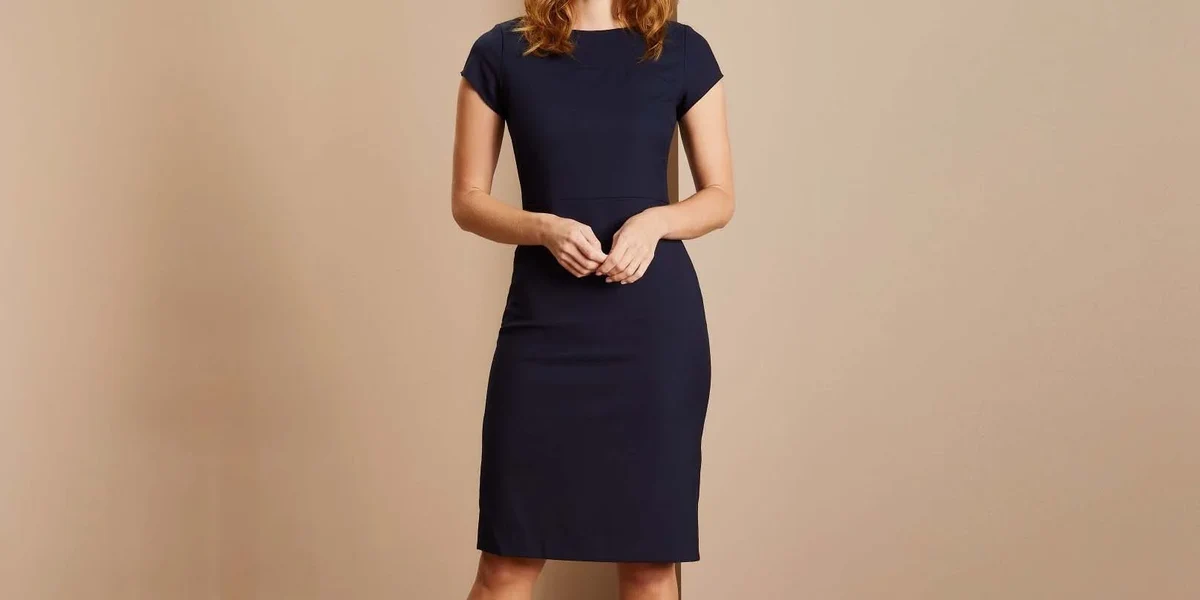Let the everyday Britons who you will actually attend smart casual settings with be your guide
You’ve got an event coming up, and the hosts have specified a ‘smart casual’ dress code. What in your wardrobe can you wear?
Sure, etiquette gatekeepers like Debretts offer guidance, but you’re going to a party hosted by friends, or an employer, not by professional formality sticklers. What do normal people think counts as smart casual?
Now to better help you figure out your outfit, we at YouGov have scoured guides for recommended clothing choices, included a few additions we thought would help demonstrate the full range of opinion, and put the list to the British public.
We first look at opinion regarding men’s outfits, then women’s outfits, and then finally see how attitudes differ by generation.
What can be worn as part of a MAN’S smart casual outfit?
Men’s tops and shirts
If you’re not sure what to wear up top for a smart casual outfit, the safest option when it comes to men is a button up shirt with collar. More than nine in ten Britons (92%) say that if this were the only thing a man was wearing on his torso, they would consider that acceptable in a smart casual outfit.
Popping either a jumper or a blazer over the top of that shirt brings this figure down ever so slightly, to 88% and 87% respectively.
A polo shirt is also a very safe choice, with 82% saying this can be worn as part of a smart casual outfit.
Wearing a t-shirt is far more controversial, with Britons split – 53% think a plain t-shirt on its own can be included in a smart casual outfit, but 41% disagree. If it were a t-shirt with a printed design, the number seeing this as acceptable plummets to just 18%.
If you were determined to wear a t-shirt, throwing something on top of it bring it more into line with people’s smart casual expectations. Wearing a blazer over a plain t-shirt counts as smart casual to 85% of Britons, while doing so with a printed t-shirt brings the number up to 51% (although 40% would still consider it inappropriate). Covering your t-shirt entirely with a jumper converts it to a smart casual outfit for 70% of people.
Alternatively, if it’s the presence of a collar that’s bothering you, then a Henley shirt might be a viable alternative, with 66% saying they can be included in a smart casual ensemble.
You might think a full suit and tie might not be honouring the ‘casual’ part of smart casual, but 38% of Britons would actually say this can be worn for a smart casual outfit. Nevertheless, with 59% saying this does not count, it might be best to avoid.
Men’s trousers
Chinos are the most quintessential smart casual trousers, with fully 95% of Britons saying they could be included in such an outfit.
Dress trousers are likewise a safe choice, with 89% saying they can we worn in a smart casual style.
Jeans are perfectly acceptable to 74% of Britons – so long as they’re not ripped or skinny. Only 39% of people think skinny jeans can be an acceptable component of a smart casual outfit, and a mere 7% say the same for ripped jeans.
Even less acceptable would be sweat pants (6%) and tracksuit bottoms (3%).
Men’s shoes
Classic smart shoes (oxford shoes, brogues or derby shoes) are a very safe choice for a smart casual outfit, with 89% of Britons giving their approval.
Desert boots and loafers are an about equally very popular choice, with 92% and 90% respectively saying these can be worn in a smart casual outfit.
Trainers prove more controversial: while 51% say they can be worn as part of your smart casual outfit, 43% disagree.
What can be worn as part of a WOMAN’S smart casual outfit?
Women’s tops and dresses
As with men’s outfits, button up shirts are the safest choice if you’re going for a smart casual look – whether on their own or with a blazer 86-87% say they can be included in a women’s smart casual outfit.
Pairing a button up shirt with a jumper, or pairing a plain t-shirt with a blazer, are similarly accepted smart casual looks, at 83% and 86% respectively. A cardigan or buttoned knitwear is likewise a good choice, at 80%.
Polo shirts are less acceptable as part of a women’s smart casual outfit than men’s – nevertheless, 66% of Britons say this can be worn.
T-shirts are less acceptable however. A plain t-shirt on its own can count as ‘smart casual’ to 53% of Britons (although as mentioned above, popping a blazer over the top increases this significantly), while only 22% think a printed t-shirt fits the description (and again, this does rise substantially to 55% if you add a blazer).
When it comes to dresses, a sheath dress is a very good smart casual option, with 89% of Britons saying it can be part of such an outfit.
A preliminary version of this survey suggested half of Britons (men and women alike) did not know what a sheath dress was from name alone, so if you’re unsure, here’s the image example we used for the finalised survey:

Likewise, a collared dress is an acceptable smart casual choice for 86% of Britons. Floor length dresses might be a more fancy choice, although 68% still say they can work for smart casual outfits.
If you’re looking for alternative one piece options, then a jumpsuit is likewise a widely accepted choice – 85% say it can be worn as part of a smart casual outfit.
Women’s trousers and skirts
When it comes to bottoms, you can rarely go wrong with dress trousers (92%) and chinos (91%). Silk trousers also make sense for a smart casual look, according to 71% of people.
Two thirds (65%) say that regular jeans can be worn for a smart casual outfit. Skinny jeans are much more accepted as smart casual attire for women than they are for men, with 55% saying they can be worn. However, ripped jeans continue to be seen as too informal, with only 8% considering them smart casual – about the same number as tracksuit bottoms (8%) and sweat pants (6%).
In terms of skirts, both pencil skirts and flowy skirts are very safe choices, with 87% and 86% respectively saying they can be worn as part of a smart casual outfit.
Women’s shoes
When it comes to shoes, people are most likely to see loafers, ankle boots and low heels as compatible with a smart casual look, at 90% apiece. Close behind are low wedges (88%) and your classic smart shoes style (oxford shoes, brogues or derby shoes) at 86%.
Raising the heel does put some people off, but not many – high wedges (80%) and high heels (76%) are still seen as working as part of a smart casual look by the vast majority.
Despite desert boots being the most ‘smart casual’ shoe for men’s outfits, far fewer people think that they have a place in women’s smart casual attire, at 61% (although this does of course still represent a majority).
Sandals are somewhat divisive, with 54% saying they can be worn in a smart casual outfit, but 37% disagreeing. Trainers are even more so, with Britons split 48% to 45% on their inclusion in a smart casual outfit.
Ballet flats should be avoided, it seems, with only 35% of people saying they can form part of a smart casual outfit – 55% say they cannot.
Of course, while those setting event dress codes – as well as attendees – can be both men and women, it may be the case that female readers don’t want to trust the fashion perceptions of men. We therefore looked at the results by gender to see whether women’s fashion advice differed from the national responses.
There is only one instance for women’s dress code where the genders actually differ in their sartorial opinion: sandals. While men feel that sandals cannot form part of a smart casual outfit for women by 49% to 38%, women give them their approval at a rate of 68%, with only 26% disagreeing.
Another notable difference relates to polo shirts, which women are much less likely to consider smart casual than men, at 58% compared to 73%. There were otherwise few items of clothing men are more likely to think counted as smart casual than women. In general, women are more likely to say a given item of clothing is smart casual, mostly because men are more likely to answer “don’t know” in relation to women’s fashion than to have a different opinion.
Older Britons are less likely to see t-shirts, jeans and trainers as ‘smart casual’
Age can also play a role in dress code expectations, of course.
Across both men’s and women’s outfits, we can see that older Britons are less likely than younger Britons to think that trainers can be included in a smart casual outfit. In both cases, while a majority of 18-24 year olds say trainers can count as smart casual (64% in a men’s outfit, 58% in a women’s outfit), a majority of those aged 65 and above take the opposing view (53-57%).
The same is true when it comes to jeans, with older Britons notably less likely to think they count as ‘smart casual’ across the three different denim formats we asked about – although unlike sandals, there is generally overall consensus between the age groups on whether jeans can be worn or not.
T-shirts are also more frowned upon by older Britons, with most examples where a t-shirt is mentioned being branded smart casual by fewer over-65s than 18-24 year olds. Indeed, whether or not a man can wear just a t-shirt up top in a smart casual outfit has the biggest generational difference of all items of men’s clothing, at 70% of 18-24 year olds versus 41% of over-65s.
For women’s smart casual, the biggest generational disputes are over sandals and desert boots. Older Britons are substantially more likely to say women can consider sandals ‘smart casual’, by 62% to 33%.
By contrast, they are far less likely to say desert boots are smart casual, with only 40% saying so, compared to 71% of 18-24 year olds. Curiously, there is no such divide when it comes to men wearing desert boots.
The extent to which older people emphasise the ‘smart’ end of ‘smart casual’ is demonstrated by their higher likelihood to consider a full suit and tie to count as smart casual for a man, at 46% of over-65s compared to 34% of 18-24 year olds.
See full results for men's smart casual here
See full results for women's smart casual here
Photo: Getty









